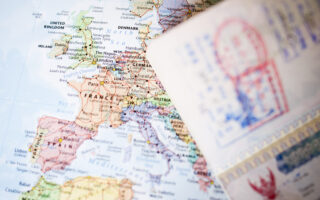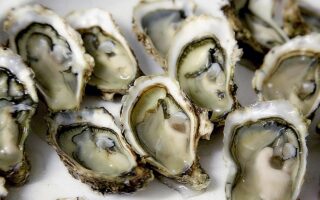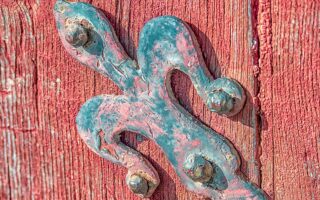Le Tour de France: The World’s Most Prestigious Cycling Race
Feature
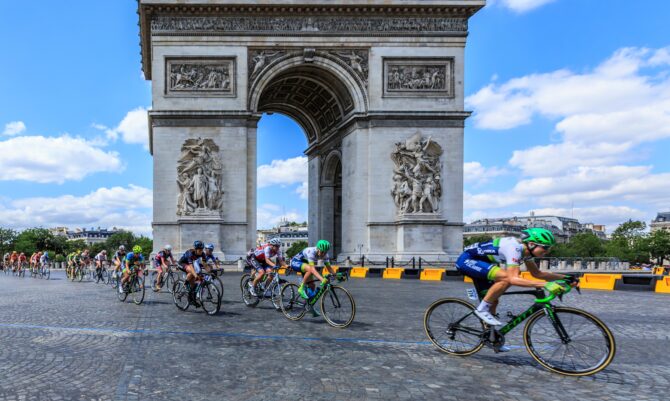
All eyes will be looking towards France this summer as host of the 2024 Paris Olympics, but another event will dominate the sporting scene in the run-up to the Olympic Games—the annual Tour de France. Due to conflicting schedules with the Paris Olympics, this year’s Tour de France will forego Paris as its final destination and end in Nice instead, but sports fans won’t want to miss either. Both events are centuries old, have an international scope, and are sure to attract billions of spectators worldwide.
Birth of a passion: the origin of the Tour de France
This annual bicycle race, the oldest of three “Grand Tours,” the other two being held in Italy and Spain, is generally considered the most prestigious. First organized in 1903, this sporting event has been a summer fixture for the past 121 years, stopping only during the two world wars. The event is a mind-boggling sporting extravaganza where 176 riders from 22 different international teams race across France. For three consecutive weeks, they will race around 3,500km of flatland, rolling hills, and grueling alpine climbs in a fitting tribute to their endurance and their will to win. The Tour is brutal from start to finish.
The roots of the Tour de France can be traced back to the Dreyfus Affair, a dark moment in the history of France, and a huge scandal when, in 1894, French Army Captain Mathieu Dreyfus, of Jewish descent, was falsely accused of treason. Many were consumed at the time by L’Affaire Dreyfus, which turned into a national obsession. Opinions were heated, to say the least, and Jules-Albert de Dion, a prominent car manufacturer, became incensed when a popular sports newspaper, Le Vélo, in which he was advertising, openly supported Dreyfus. At the time, there was a genuine enthusiasm for cycling, and races were already being organized all over the country. With it came a natural appetite for news about the sport, and automobile manufacturers, seeing a golden opportunity to boost sales, were keen to advertise in the media.
Dion quickly rallied Edouard Michelin and Alphonse Clément, automotive tycoons themselves, when he decided to create L’Auto-Vélo, which later became l’Auto, with the purpose of destroying their rival: Le Vélo.
Dion quickly hired Henri Desgrange, a man with significant experience in journalism and a seasoned cyclist himself, as the editor-in-chief, and, to assist him, Dion did not hesitate to “poach” Géo Lefèvre, a young cycling reporter from Le Vélo, who had been toying with a great idea and was dying to share it with his new boss.
While Desgrange is considered the founding father of the Tour de France, Lefèvre can be credited with the idea. “How about organizing a cycling race across France?” he mused over dinner with Desgrange, who was hesitant at first.
La grande boucle
The first Tour de France, also known as la Grande Boucle, was to take nineteen days in six stages (étapes), each one twice as long as the ones we know today. Paris, Marseille, Toulouse, Bordeaux, and Nantes were the chosen destinations before heading back to Paris, for a total of just over 2,400km. The prize? 20,000 French Francs, a hefty sum in those days offered by L’Auto.
It is difficult to imagine that first race when riders rallied for stage one of the competition on July 1st, 1903. They gathered in front of a café called “Au Réveil-Matin” in a suburb south of Paris ready to confront one another in untested territory, ready to test this fairly new invention: le vélo, the bicycle. They were expected to race from Paris to Lyon non-stop, even in the dark of night, with no support along the way. In order to drum up enthusiasm and draw crowds, a small motorcade, bedecked with adverts, traveled two hours ahead of the sixty or so competitors from France, Belgium, Italy, and Germany, a mix of professional and amateur riders. Needless to say, the roads were unpaved as we know them today, and the lighting was non-existent. The riders had to rely on the moon to guide them at night. Astonishing as it may sound, they were not equipped with helmets, and their bikes had no gears and often no brakes. They were expected to make their own repairs along the way and often carried spare tires around their shoulders. They also had to face the scorching sun in the daytime and frosty nights without food. They were allowed to drink wine or beer, sometimes laced with cocaine, as water was shunned at the time for its lack of cleanliness. On the other hand, riders were allowed three days of rest between stages. It was a masterclass in resilience.
That year, as the first-ever Tour raged on, Desgrange could only hope for the best. No one had ever attempted such a sporting event, and no one was sure of the outcome. It was a huge gamble, and success was paramount to the very survival of L’Auto. To everyone’s relief, fans appeared along the way and were easily conquered. Circulation of L’Autosoared. Le Vélo went bankrupt. Mission accomplished! Desgrange was overjoyed. The race displayed notable feats of endurance and stamina, and the Tour would survive and become one of the world’s major sporting events. The downside was that it was already plagued by scandal, namely in the form of cheating. “La Triche” soon became a household word. Even during that first Tour, competition was fierce, and mayhem was already present. The riders were eager to do anything to win. Some got help when they accepted lifts or were towed by cars. Others resorted to sprinkling the road with nails and broken glass in order to prevent the riders behind them from catching up. Some were even given drinks with the sole purpose of making them sick. Many were forced to abandon.
In all, 21 of the original riders made it back to Paris by July 19th. The winner, a diminutive 32-year-old chimney sweep by the name of Maurice Garin, crossed the finish line, all caked in mud. Garin spent 95 hours in the saddle and averaged 15 miles an hour. He was later disqualified when it was discovered that he had illegally accepted food on the way. A year later, there was another incident when riders pedaled through Saint-Etienne, south of Lyon, and fans protested the disqualification of a local rider and sought revenge. They placed tacks and broken glass along the way.
In another incident, fans of a hometown rider, Antoine Faure, and a rival to Garin, formed a human blockade and started to beat up the cyclists until Géo Lefèvre appeared on the scene and fired a shot in the air to stop the melee. Fortunately, the Tour has, since then, made progress on that front.
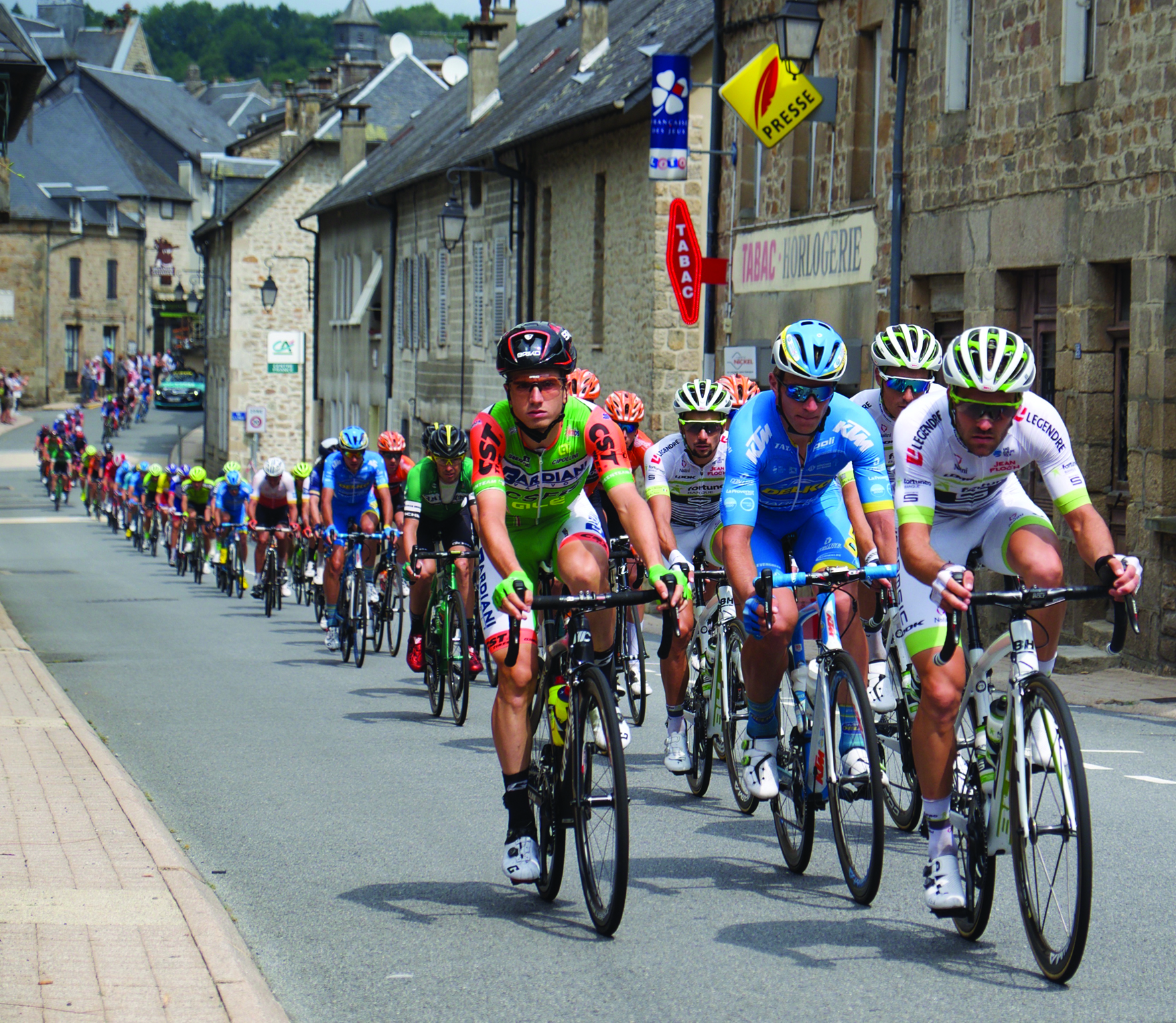
An international sporting event
Nowadays, the iconic race is an international sporting event with 176 riders within 22 teams. It is an enormous “machine”. Each team is accompanied by a crew of “directeurs sportifs, soigneurs, mécaniciens, and doctors. There are also ambulances tagging along, just in case. The directeurs sportifs are the trainers while the soigneurs are there to take care of their riders. Their mission is to prepare each rider for their daily étape (stage), looking after them from start to finish, even when the riders reach their hotel. On top of providing massages and rehab techniques, they care for their crew in a psychological way. It is said that riders appreciate not being left alone after a day’s ride and seek the comforting words of a confidant. To add to the spectacle, there are caravans festooned with advertising, where drivers often distribute samples along the way to the 12 million or so fans who follow the race in person. Fans are not always standing behind barriers and behaving themselves. Things can get out of hand when excited fans get very close to the riders. It soon becomes a real circus with the shouting and cheering, often putting the riders at risk of a fall. It is a noisy event, and riders have to be aware of the unpredictable, as cars, motorcycles, and reporters in helicopters follow them throughout the day, but that carnival atmosphere is what makes this sporting event so appealing.
What does it take to win the Tour de France?
Each team has its own buses and trucks equipped with the latest technology in exercise machines. In all, 500 crew members accompany the riders. The Tour rewards its riders’ performance daily with a colorful jersey. The yellow jersey (maillot jaune) is the most coveted and is awarded to the overall leader of the race that day. Then comes the green jersey (maillot vert), which relates to points awarded; the red polka-dots are worn by the best climbers, while the white jersey is worn by the best young rider.
A Tour rider is noticeably thin and burns, on average 7,000 calories per day. His performance is governed by his cardiovascular system, not muscle strength. That is the reason why his legs are unusually “veiny,” as masses of blood pump up to the heart to keep him going. Unlike his predecessor, today’s rider of the Tour is pampered. Sleep and recovery are paramount to a good day on the bicycle. Nothing is neglected, and teams come equipped with the best when it comes to comfort. The riders are provided with their own mattress and pillow; the trucks that follow them everywhere provide daily amenities, including washing machines; and all sorts of sporting equipment. Turbo trainers allow them to practice on their bikes inside the trucks while simulating actual road conditions. Companionship is also encouraged as it has proven to be good for the morale, so riders usually share a bedroom. Riders consume huge amounts, both on and off their bikes, of bottled water, energy drinks, and energy bars. Each team has its own chef, and meals are tailor-made to meet each rider’s needs.
Sad moments and scandals
Over the years, the Tour de France has had its share of memorable moments, dramas, and scandals. A team car hitting and injuring riders, massive chain-reaction bicycle crashes, spectacular falls, violent snowstorms in the hills, and even accidental death. July 11, 1964, remains a terrible memory, when a tank truck accidentally veered out of control in Port-de-Couze near Bergerac, hitting several spectators before plunging into the Dordogne River and killing nine people minutes before the Tour riders appeared on the scene. The race was not canceled, and the stunned riders were told to set forth despite the horrible scene they had just been witness to.
Although illegal, performance enhancers have always been readily available. The first drug tests were introduced in 1966, and many star riders have been stripped of their title since then. In 1998, the Festina Affair came to light when a “soigneur” was arrested at the border near Lille with large amounts of doping products hidden in his support car. Richard Virenque, the team leader of Festina, later claimed he was innocent and left the Tour in tears. Since then, many superstars of the Tour have been stripped of their titles, such as Alberto Contador and Floyd Landis, not forgetting Lance Armstrong, who was stripped of all seven titles. These scandals have shaken the Tour to its foundations. Is cycling clean today? It is difficult to assert anything, although the Tour organizers are doing their best to keep things in check.
The Tour de France Today
As the Tour gained in popularity, the race lengthened and gained more international participation. To this day, the Tour de France remains the top sporting event of its kind in the world. The race is an astonishing 3,405km long, with eight stages on flatland, four in slightly hilly grounds, and eight stages in the insanely steep mountain ranges. There is also an individual race against the clock. This sporting extravaganza draws billions of spectators around the world and is watched in more than 190 countries.
Compared to other major sports, cyclists do not win fortunes. The grand winner (the rider with the maillot jaune) gets 500,000 € in prize money, a paltry sum compared to tennis, golfing, and soccer champions. More than 2 million euros are shared between the teams and their riders. Some riders who win a stage along the way can earn up to 11,000 € that day. Unlike most sporting events, fans (between ten and twelve million) who line the roads do not pay any fee. The Tour is privately owned by the Amaury family, publishers of L’Equipe, the top sporting daily newspaper, that emerged from the defunct publication “L’Auto.” Turnover is small compared to other sports. The Amaury Group garners its earnings from advertising, television rights, and cities that pay a fee to participate in the race. Around 250 cities send a request every year to ASO (Amaury Sport Organisation) to host the Tour. Towns that are chosen for the Tour’s starting point must pay a 65,000 € fee, while those chosen for the arrivals at the end of the day must pay a 110,000 € fee.
The Tour de France is the most physically demanding sport of all. Riders must display extraordinary mental characteristics and exceptional physiological attributes. This 2024 route will incorporate four mountain ranges with four summit finishes and feature the hilliest opening stage in its history.
Despite the scandals, the Tour de France remains a great showcase of courage peppered with a determined mind to win. The most wins ever of the Tour de France go to four riders with five victories each: Jacques Anquetil, Eddy Merckx, Bernard Hinault, and Miguel Indurain. This year, the competition between rivals Danish Jonas Vingegaard and Slovenian Tadeg Pogacar, should be a shocker and come with a wealth of surprises.
Watch the Tour de France 2024
The Tour de France 2024 will be in its 111th edition. Due to the Paris Olympics, this year’s event will start in Florence, Italy, on June 29th, and finish in Nice, France, on July 21.
Share to: Facebook Twitter LinkedIn Email
By Denyse Betts
Leave a reply
Your email address will not be published. Required fields are marked *

